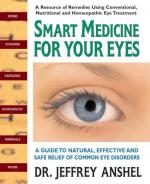|
This section contains 1,160 words (approx. 4 pages at 300 words per page) |

|
The eye is the delicate organ of sight with which we keep informed about the natural world around us. Light from an object first strikes the transparent covering of the eyeball, the cornea, then passes through the lens, a clear, flexible disk, which bends the light rays enough so that they focus on the back of the eye, the retina.
Some early discoveries about the physiology of vision were made by Thomas Young, a British physicist and physician. In 1793 he observed that the eye focuses on near or distant objects by changing the shape of the lens. This adjustment is called accommodation. Around the turn of the nineteenth century, Young discovered that color sensation is controlled by tiny structures on the retina which we now call cones, Charles Babbage (1792-1871), an eccentric English mathematician who is sometimes referred to as the grandfather of the modern computer...
|
This section contains 1,160 words (approx. 4 pages at 300 words per page) |

|


